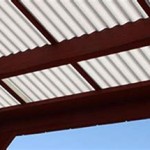How To Replace Fabric On A Patio Chair
Replacing the fabric on a patio chair is a cost-effective way to refresh outdoor furniture and extend its lifespan. Instead of purchasing new chairs, individuals can revitalize existing frames with new fabric, allowing for customization and personalization of outdoor spaces. This process, while requiring some basic tools and skills, is generally manageable as a DIY project. This guide provides a detailed walkthrough of the steps involved in replacing fabric on a patio chair, covering materials, preparation, removal, cutting, sewing, and installation.
Key Point 1: Preparation and Material Acquisition
Before commencing the fabric replacement project, crucial preparation steps are necessary. These steps involve assessing the existing chair, gathering required tools, and selecting appropriate fabric. The ultimate success of the project hinges on the accuracy of these initial steps.
The first step is to thoroughly inspect the patio chair. Evaluate the overall condition of the frame, noting any areas of rust, damage, or weakness. If the frame is compromised, repairs should be made before proceeding with fabric replacement. Clean the frame using a brush and mild detergent to remove dirt, debris, and mildew. Addressing any structural issues early on ensures the longevity of the reupholstered chair.
Next, gather the necessary tools and materials. Essential tools include a seam ripper, scissors, measuring tape, pins, a sewing machine, heavy-duty thread (specifically designed for outdoor use), marking chalk or fabric marker, pliers, a staple gun (if applicable), and staples (if applicable). A flathead screwdriver or putty knife may also be useful for removing old fabric. Having all tools readily available streamlines the replacement process.
Selecting the correct fabric is critical for durability and longevity. Outdoor fabrics are specifically designed to withstand the elements, resisting fading, water damage, and mildew growth. Consider fabrics such as Sunbrella, which is highly regarded for its UV resistance and durability. Other options include solution-dyed acrylic, polyester, and olefin fabrics. The choice depends on the desired aesthetic, budget, and level of weather resistance required. Ensure sufficient fabric is acquired based on chair dimensions. A general rule is to purchase slightly more fabric than needed to account for seams, errors, and potential pattern matching requirements.
Key Point 2: Fabric Removal and Pattern Creation
Removing the old fabric and creating a new pattern are essential steps in preparation for cutting and sewing the replacement fabric. Careful fabric removal provides a template for accurate pattern creation, leading to a well-fitting replacement cover.
Begin by carefully removing the existing fabric from the chair frame. In many cases, the fabric will be attached with staples, tacks, or screws. Use a staple remover, flathead screwdriver, or pliers to carefully extract these fasteners. Work slowly and methodically to avoid damaging the frame. As the fabric is removed, pay attention to how it was originally attached, noting any seam allowances, folds, or pleats. These details are essential for replicating the original design.
Once the old fabric is removed, it can be used as a pattern for cutting the new fabric. Lay the old fabric pieces flat on a large, flat surface, such as a table or clean floor. Smooth out any wrinkles or creases. If the old fabric is severely damaged or distorted, it may be necessary to create a new pattern based on careful measurements of the chair frame. Use a measuring tape to determine the dimensions of each section, adding seam allowances (typically ½ inch to 1 inch) to all edges.
Place the old fabric pieces or the newly created pattern pieces onto the new fabric. Pin the pieces securely in place, ensuring the fabric is aligned with the grain. Use fabric chalk or a fabric marker to trace the outline of each pattern piece onto the new fabric. Carefully cut out each piece along the traced lines, using sharp scissors or a rotary cutter. Precision in cutting is crucial for achieving a professional-looking result.
Key Point 3: Sewing and Installation
The sewing and installation phases determine the final appearance and functionality of the reupholstered patio chair. Correct sewing techniques and secure attachment of the new fabric are essential for a durable and aesthetically pleasing outcome.
Before beginning to sew, ensure the sewing machine is properly equipped with a heavy-duty needle and the correct thread. Test the stitch length and tension on a scrap of the new fabric to ensure optimal results. Sew the fabric pieces together, following the original seam lines and construction methods. Pay close attention to the order in which the pieces are joined, replicating the original construction process as closely as possible. Use a backstitch at the beginning and end of each seam to secure the thread and prevent unraveling. For added durability, consider using a double-stitched seam on high-stress areas. Trim any excess fabric from the seams to create a clean finish.
Once the fabric cover is sewn, it is ready to be installed onto the patio chair frame. Carefully stretch the fabric over the frame, ensuring it is properly aligned and evenly distributed. Use a staple gun (if applicable) to secure the fabric to the frame, working from the center outwards. Pull the fabric taut as you staple to eliminate any wrinkles or slack. If screws or tacks were used originally, replace them in the same locations. Ensure the staples, screws, or tacks are securely fastened to prevent the fabric from pulling loose over time.
After the fabric is attached, inspect the chair for any loose fabric, uneven seams, or other imperfections. Make any necessary adjustments to ensure a tight, smooth fit. Trim any excess fabric from the edges to create a clean, finished look. If the chair incorporates any cushions or padding, ensure they are properly positioned and secured within the new fabric cover. The completed patio chair, now reupholstered with new fabric, revitalizes the furniture and extends its usability for future outdoor enjoyment.

How To Replace Outdoor Sling Chair Fabric With Phifertex

How To Replace Fabric On A Patio Sling Chair

How To Replace Two Piece Sling Chair Fabric

How To Replace Fabric On A Sling Chair Ofs Maker S Mill

Replacing Repairing Dryrotted Fabric On Outdoor Furniture Hometalk

Replacing Fabric On A Sling Patio Chair Fun Diego Family Guide

How To Replace Fabric On A Patio Sling Chair

Replacing Fabric On A Sling Patio Chair Fun Diego Family Guide

Replacement Sling Cover For Patio Furniture Make Your Own

Thrift Flip Diy Refinished Patio Chairs How To Refinish And Replace Fabric On








